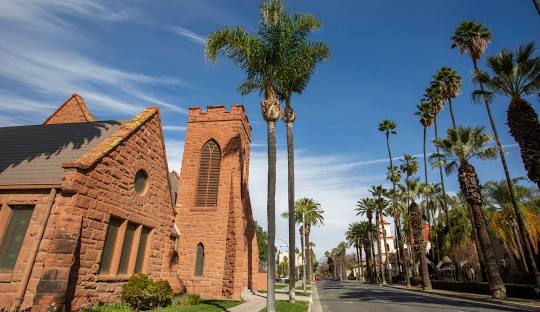
How Three Orange Trees Sparked Riverside’s Citrus Boom
Posted by on
The success of Riverside’s citrus industry can be traced back to three Brazilian navel orange trees planted on the property of Eliza and L.C. Tibbets in the early 1870s. However, one of the trees met an untimely demise when it was trampled by a cow within the first year. To ensure the survival of the remaining two trees, they were transplanted to the property of Sam McCoy, where they received better care.
As Riverside’s reputation for citrus cultivation grew, the trees were moved again. In 1903, one of the trees was relocated to the Mission Inn property in a ceremony attended by President Theodore Roosevelt, though it died in 1922. The final tree found its permanent home at the intersection of Magnolia and Arlington Avenues, where it still stands today, protected by a commemorative fence and a stone marker honoring Eliza Tibbets.
The southern California climate proved ideal for navel oranges, leading to a rapid expansion of citrus farming. Growers eagerly purchased bud wood, grafting new trees onto existing rootstocks. By 1882, over 500,000 citrus trees had been planted in California, with nearly half of them in Riverside. The combination of refrigerated railroad cars and advanced irrigation techniques allowed for large-scale distribution, cementing Riverside’s place as the heart of the citrus industry.
By 1895, the industry had turned Riverside into the wealthiest city in the United States per capita, a status still commemorated at the California Citrus State Historic Park and the restored packing houses in Riverside’s Marketplace district. Today, the city continues to celebrate its citrus heritage, a legacy that began with just three trees and a vision for agricultural success.